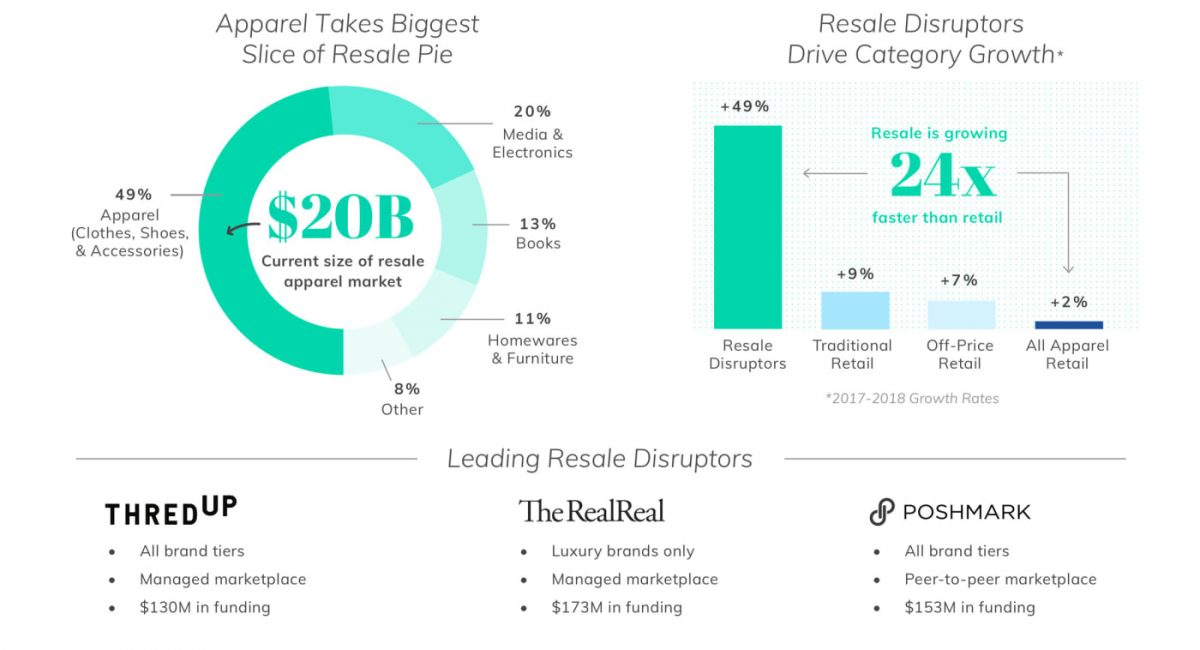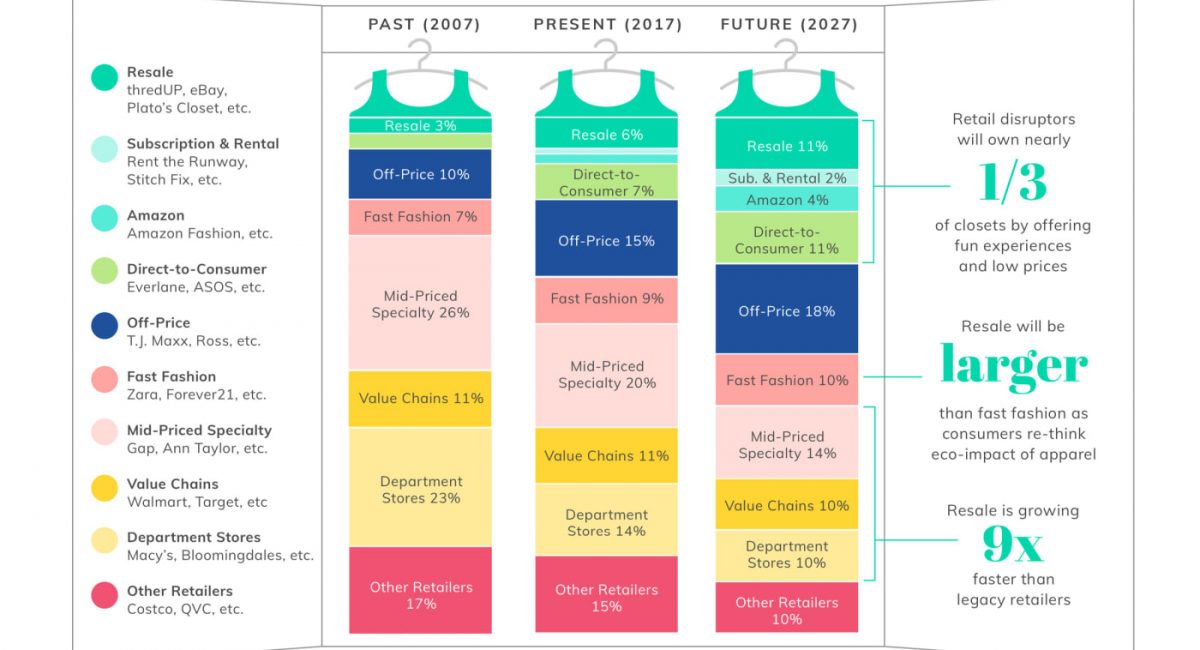RESALE IS EXPECTED TO BE BIGGER THAN FAST FASHION WITHIN 10 YEARS
Watch out, Zara: Millennial shopping preferences are veering more sustainable.
By DHANI MAU
04/03/18
The growth of resale — especially online — has been one of the biggest shifts in retail we’ve seen in recent memory. And based on a new report, that shift shows no signs of slowing down.
On Tuesday, leading resale site Thredup released its annual report covering the present and future of the resale market as a whole. It posits that the resale market will be worth $41 billion by 2022, and 49 percent of that will be apparel.
We knew resale was thriving, but were surprised to learn how quickly it may overtake other markets and shopping methods — including fast fashion — and how millennials, despite being broadly wasteful, are driving this movement. Read on for the most interesting takeaways.
“It posits that the resale market will be worth $41 billion by 2022…”
‘RESALE DISRUPTORS’ ARE OUTPACING RETAIL AS A WHOLE — BY A LOT.
Resale disruptors — meaning online consignment sites — will own nearly one third of closets by 2027, according to the report. They’re growing nearly 24 times faster than retail as a whole: 49 percent year-over-year, vs. 2 percent. The three leading resale disruptors are said to be Thredup, The RealReal and Poshmark, which have raised $130 million, $173 million and $153 million in funding to date, respectively. “Additional players” mentioned in the report include Rebag, Depop, Tradesy and Grailed.


MILLENNIALS ARE BOTH INCREDIBLY WASTEFUL AND SUSTAINABILITY-MINDED
They are the most impulsive generation when it comes to shopping, and typically discard items after 1-5 wears. At the same time, 77 percent of them say they prefer to buy from environmentally-conscious brands and they are “more likely to switch to thrift for environmental reasons.” Forty percent of 18-24 year olds shopped resale last year.
RESALE IS ACTUALLY OVERTAKING FAST FASHION
Resale sites, as well as sharing platforms like Rent the Runway, have often positioned themselves as sustainable alternatives to fast fashion: A way to satisfy a social media-driven constant desire for newness without contributing to the negative environmental impact of buying disposable fashion from companies like Zara, H&M and Forever 21. Turns out, it’s working. In 2017, resale had 6 percent market share while fast fashion had 9 percent. In 2027, that’s projected to be 11 percent resale, 10 percent fast fashion.